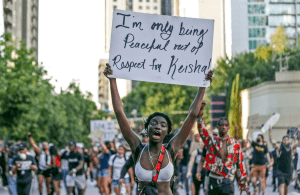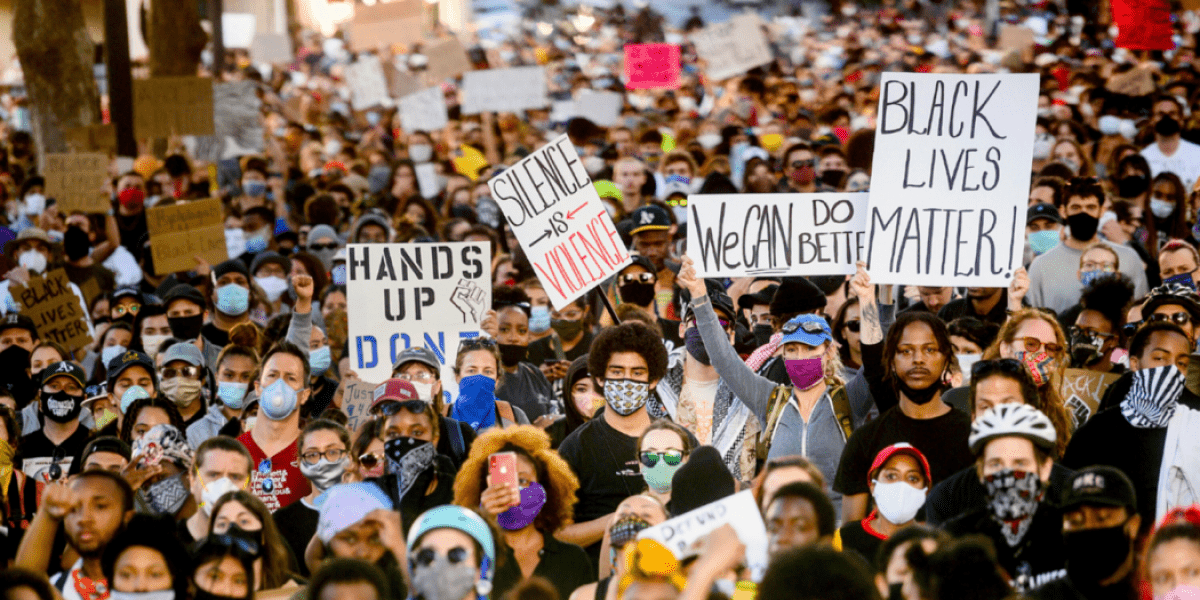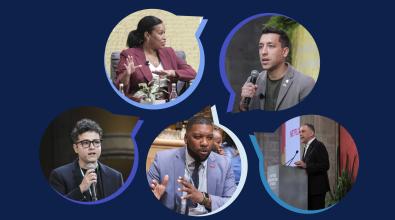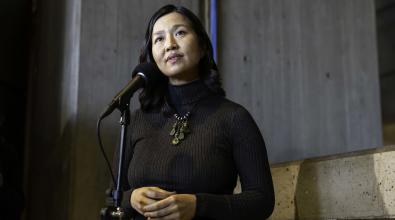Can cities protect protestors? We asked a public-health expert

As hundreds of thousands of people take to the streets in demonstrations against racial injustice and police brutality, America’s mayors are faced with a tough question: How can they convey their support for peaceful protests while, at the same time, discourage residents from putting themselves and others at risk for COVID-19?
The speed of these dual and overlapping crises have forced mayors to find answers to their own questions in real time. San Francisco Mayor London Breed modeled one one approach when she kneeled alongside others at a peaceful rally, wearing a mask and keeping a safe distance from others. But as anyone participating in these protests or watching on TV can see, most of these demonstrators are standing shoulder-to-shoulder — and many of them aren’t wearing masks.
With all this in mind, Bloomberg Cities asked Dr. Joshua Sharfstein of the Johns Hopkins Bloomberg School of Public to address this latest concern and to provide guidelines for mayors to consider in the days and weeks to come. Sharfstein has been a regular speaker at weekly coaching and learning sessions with mayors as part of the COVID-19 Local Response Initiative. Here’s what he had to say:
What might Mayors say and do to address the risk of coronavirus for people protesting?
Sharfstein: Mayors can both express support of the protests while also supporting the health and safety of the people who are protesting. In addition to emphasizing basic precautions, mayors can make masks and hand sanitizer available to protesters.
What mayors are doing:
- Houston and St. Louis are distributing masks to those who don’t have them at protests.
- On CNN, Mayor Keisha Lance Bottoms said: “I just hope that people will get tested and will remember that we are really, we’re still in the middle of a pandemic … and our communities are sick and they’re tired and they’re dying. They’re dying from Covid-19, they’re dying from poverty, they’re dying from police brutality.”
Might enhanced testing help with controlling the risk of coronavirus outbreaks?
Sharfstein: Testing is a core part of coronavirus control. In this case, mayors can respond to questions that might arise about protests and coronavirus to remind everyone — whether or not they have been protesting — to seek testing and isolate from others when symptoms develop. If testing centers are closed because of the protests, reopening them is an opportunity to spread this universal message.
It is important to remember that symptoms (and positive tests) can develop up to 14 days after an exposure, so an early negative test is not an all-clear sign. So to protect people at high risk at home, individuals who are concerned about exposure should stay 6 feet away and wear masks when in close contact for 14 days.
What mayors are doing:
- Mayors and in Atlanta, Denver, Jacksonville, Fla., Newark, N.J., New York City, Philadelphia, and other cities are urging protest participants to get tested for COVID-19.
- Chicago Mayor Lori Lightfoot is urging anyone who’s attended a protest to self-quarantine at home for 14 days if possible.
Is there a connection between elevated rates of coronavirus in minority neighborhoods and violence by law enforcement?
Sharfstein: Mayors can point out that racial injustice is a common link between elevated rates of coronavirus infection and mistreatment by law enforcement. Solutions to this underlying challenge include not only police reform, but also improvements in housing conditions, better access to jobs and transportation, investments in public education, and rapid access to healthcare.
For more reading:



